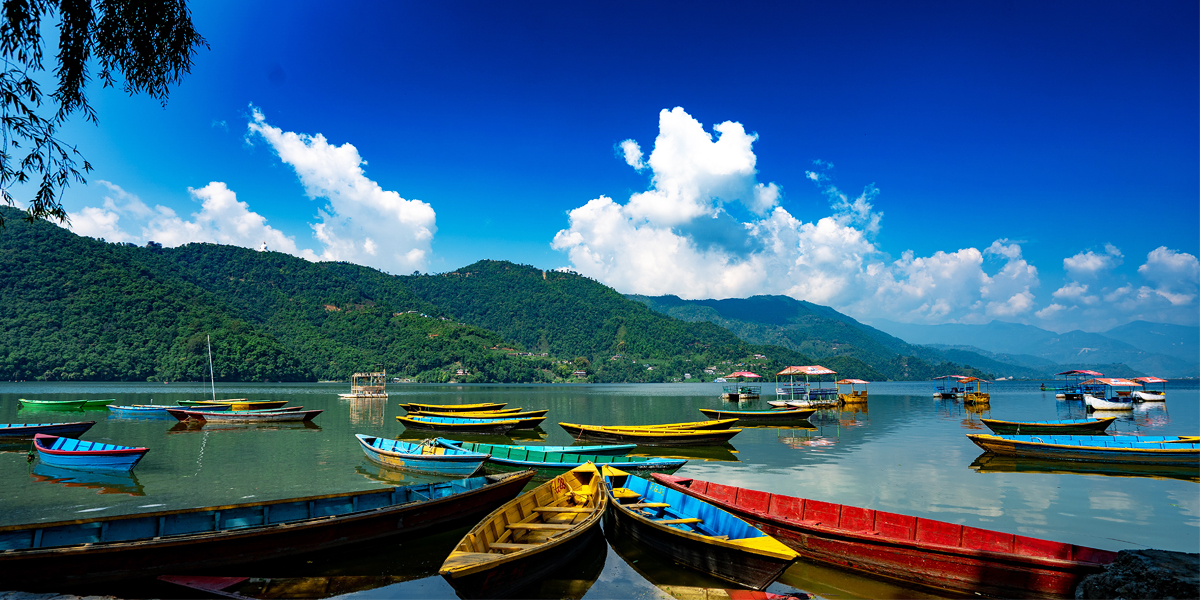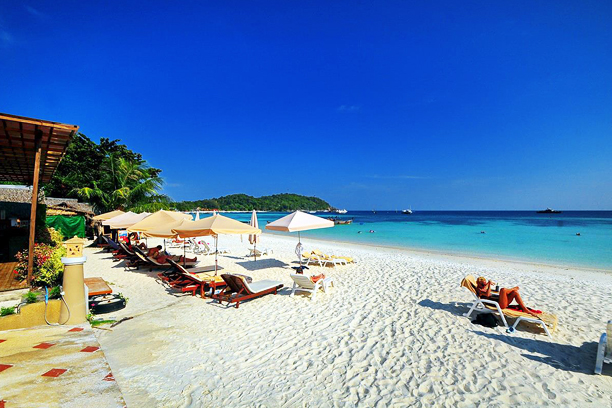Pokhara
Undoubtedly, Pokhara is regarded as the tourism capital of Nepal. It has something for everyone: whether lakeside relaxation is top of your agenda, or something more adventurous.


A beautiful city covered in lakes and guarded by snow-capped mountains, Pokhara is a budding travel destination in Nepal. The second largest urban region in the country, Pokhara is about 205 kms away from capital Kathmandu. Thanks to its proximity to the Annapurna Range, Pokhara has become the base city for the trekkers and mountaineers. The city is marked by the presence of many lakes, of which the most famous is the Phewa Lake. One bank of this lake is testimony to the commercial development of the city and the other is marked by dense wilderness. Courtesy the presence of many cliffs and open valleys, Pokhara is one of the best paragliding destinations in all of Asia.
In Pokhara you can experience the excitement of adventure: boating, hiking, pony rides, paragliding, bungee, zipline or simply relaxing at one of the several lakes in the valley.
Undoubtedly a signature landmark of Pokhara, the Phewa Lake or Phewa Tal is the second largest lake in Nepal. The north eastern side of the lake also known as Lakeside has seen immense commercial development in the recent past and is a buzzing tourist hotspot now with rows of hotels and restaurants in place. This gives the travellers easy access to the lake side where they come for boating or just a leisurely day out. On a good cloudless day, one can even see the reflection of the Annapurna Mountains on the crystal clear lake water! In contrast to the Lakeside, the south western shore of Phewa Lake is still very much unexplored thanks to the lush Rani Ban. If you are into cycling, then you will love to have a cycle ride along the lake shore. Trekkers will definitely like to hike up to the nearby World Peace Pagoda offering exquisite views of the lake with the background of the snow covered mountains.
Also known as Shanti Stupa, World Peace Pagoda is a Buddhist pagoda style monument located on a hilltop overlooking the Phewa Lake. The Sanskrit word ‘shanti’ means peace and as the name goes, this pagoda is dedicated to world peace. This is the second shanti stupa in Nepal after the one in Lumbini. This stupa which is now a leading tourist attraction in Pokhara saw a topsy turvy ride from its inception back in 1947. Finally opened for public in 1999 after 7 years of renovation, World Peace Pagoda offers amazing trekking option from the southeastern shore of Phewa Lake. Apart from stunning view of the mountains and lake, one can also enjoy a splendid view of sunrise and sunset from this stupa.
Pokhara is an ancient and significant urban establishment of Nepal which is trying hard to hold on to its old world remnants and the Old Town is the embodiment of it. Located north of the buzzing Mahendra Pul, the Old Town is a treat for the ones who love to get the pulse of a new place from its epicentre. Best explored on foot, Old Town Pokhara offers an unmatched view of the new parts of the city in the morning before the traffic and daily chores take over the landscape. While you take a trip to Old Town, you will come across a marketplace selling locally produced items; Bhimsen Temple, an old shrine dedicated to the Newari god of trade and commerce and Bindhya Basini Temple, dedicated to goddess Durga. Spend time exploring the alleys of Old Town while it offers amazing photo ops!
Sort of a Mecca for mountain lovers and mountaineers all around the world, the International Mountain Museum is a landmark destination in Pokhara. Otherwise a sleepy but vibrant town, Pokhara rings a bell when someone mentions International Mountain Museum. The foundation stone of this museum was laid in 1995 under the initiation of Nepal Mountaineering Association (NMA) who realised the importance of preserving all the major and minor records and evidences regarding Himalayan expeditions. After 9 years of ceaseless efforts and data collection, the museum was opened to public in 2004 and since then it has become an indelible aspect in every Pokhara vacation plan. Dedicated to the Himalayan range and the mountaineers who conquered some of the world’s toughest peaks, International Mountain Museum is a must visit in Pokhara.
Locally known as Patale Chhango which means underground falls, Devi’s Fall is a popular landmark in Pokhara. A rather unusual fall, this natural phenomenon marks the point where the Pardi Khola stream vanishes underground all of a sudden! During the monsoon season, one can clearly hear the thundering sound of water splashing against the rocks of the gorge underneath. The association of a legend of a drowned Swiss couple adds more mystic charm to the fall. Named David, that unfortunate traveller tumbled into the sinkhole taking his female partner down with him. Many believe that the fall was originally called David’s fall which got a local reference and became Devi’s Fall!
Peak season is April to June, when days are warm to hot and nights are cool. Around June to October is the rainy or monsoon season. These might not be the best time for trekking as trails may be challenging and muddy. Winter is said to be chilly.
On Lakeside Road (the main road going towards the lake), you’ll find many shops and restaurants to cure your shopper’s longing. You’ll find shops selling knock off Northface clothing, backpacks, cool Nepali boheme hippie wear (pyjama pants) to cashmere scarf shops, etc… Towards the furthest part of the road past the lake you’ll find restaurants and bars. Some apparel shops will require haggling– usual discounts occur if you buy more than one item.
From Airport: You can fly to Pokhara directly from Kathmandu. The travel time is about 40 minutes. Note that flights in Nepal are uncertain due to the weather conditions.
From Railway Station: Railways are not available in Nepal. If you are coming from India, then get to the nearest railway hub of either Jayanagar or New Jalpaiguri, cross the border and the board a bus to Kathmandu which takes about 12 - 14 hours from the borders.
By Bus: Buses are very easily available from Kathmandu to Pokhara and the travel time is about 7 hours. They leave early morning around 6 - 8 AM. Variety of bus services are available, you can book them with any travel agent. Few of the bus operators even have an online reservation system.

Book with Us and Get Best Deals in
*Terms and Conditions applied